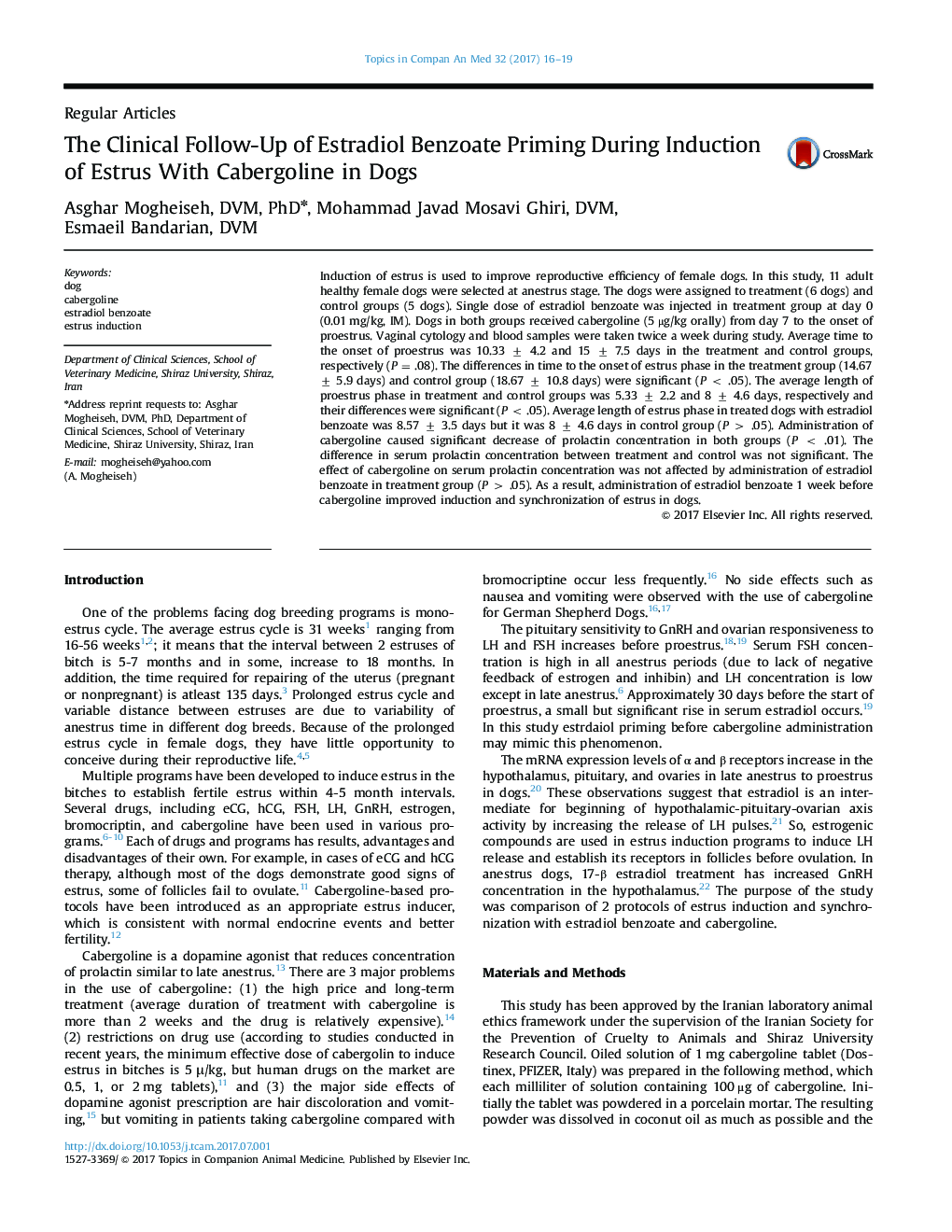| Article ID | Journal | Published Year | Pages | File Type |
|---|---|---|---|---|
| 5536101 | Topics in Companion Animal Medicine | 2017 | 4 Pages |
Abstract
Induction of estrus is used to improve reproductive efficiency of female dogs. In this study, 11 adult healthy female dogs were selected at anestrus stage. The dogs were assigned to treatment (6 dogs) and control groups (5 dogs). Single dose of estradiol benzoate was injected in treatment group at day 0 (0.01 mg/kg, IM). Dogs in both groups received cabergoline (5 μg/kg orally) from day 7 to the onset of proestrus. Vaginal cytology and blood samples were taken twice a week during study. Average time to the onset of proestrus was 10.33 ± 4.2 and 15 ± 7.5 days in the treatment and control groups, respectively (P = .08). The differences in time to the onset of estrus phase in the treatment group (14.67 ± 5.9 days) and control group (18.67 ± 10.8 days) were significant (P < .05). The average length of proestrus phase in treatment and control groups was 5.33 ± 2.2 and 8 ± 4.6 days, respectively and their differences were significant (P < .05). Average length of estrus phase in treated dogs with estradiol benzoate was 8.57 ± 3.5 days but it was 8 ± 4.6 days in control group (P > .05). Administration of cabergoline caused significant decrease of prolactin concentration in both groups (P < .01). The difference in serum prolactin concentration between treatment and control was not significant. The effect of cabergoline on serum prolactin concentration was not affected by administration of estradiol benzoate in treatment group (P > .05). As a result, administration of estradiol benzoate 1 week before cabergoline improved induction and synchronization of estrus in dogs.
Related Topics
Life Sciences
Agricultural and Biological Sciences
Animal Science and Zoology
Authors
Asghar DVM, PhD, Mohammad Javad DVM, Esmaeil DVM,
